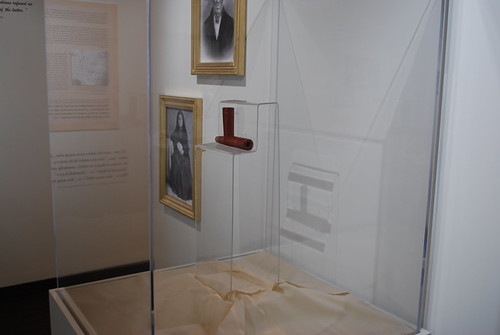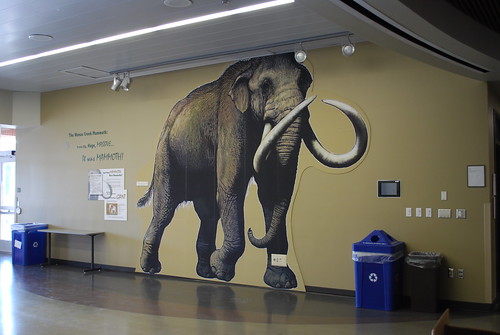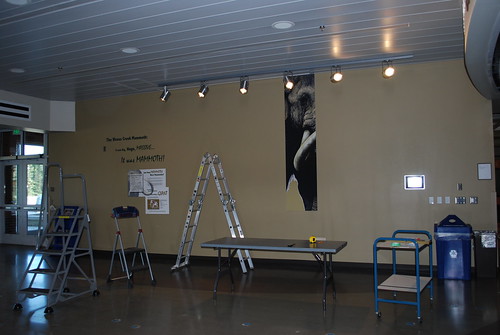Last year, through a small grant from the University, the museum was able to purchase a heating element and some plexi glass. This year, as we began to develop our exhibits in house, we started to really use the tools we had on hand.
The heating element and our very high tech method of lining up and stabilizing plexi - lumber with lines drawn on it.

The rod in the heating element gets very very hot, and the plexi, when placed above it, softens and becomes pliable, allowing us to bend and manipulate the material. When I began experimenting with the heater and plexi, I used some 1/2" plexi we had laying around. Unbeknownst to me, 1/2" plexi is really tricky stuff to work with. I quickly discovered the trickiness - the plexi wound strain against the bend lines, causing striations.

I had better luck working with our 1/8" plexi, which is much easier to deal with. Seeking guidance, Andy Granitto, Curator of Exhibitions at the Yakima Valley Museum offered to give myself and programming manager, Angie Koch some pointers. Which we gladly took him up on.
Armed with my new, increased understanding of mountmaking, I was faced with my first challenge - mount a pipe in the middle of an exhibit case, preferably so it would look more or less like it was floating. After a couple of sketches, I decided that a tall, freestanding shelf would serve our needs. So that's what I made from plexi.

I embedded the bottom of the stand in an ethafoam block to provide a more stable base. The pipe is attached to the stand through use of monofilament. The process was definitely a learning experience, but it's very exciting to be able to achieve a professional look in house.



